“If you intend to buy an Aboriginal painting or sculpture, I suggest getting it here. Usually, there will be people gathering and working on paintings and such. You can get it directly from them, and it’s cheaper than the ones sold in town,” our tour guide Norm shared his two cents as he drove us deep into Kakadu National Park.
I turned to my friend, who had managed to sleep on the bus and thought of something similar to what she had said the previous day. She hesitated to buy the Aboriginal painting we saw in Parap Village Markets because she wasn’t sure how much the artist would get after the commission and other expenses.
Eventually, we reached the East Alligator River—the gateway to Arnhem Land and became acquainted with a few artists working near the riverbank.
Terrence, one of the painters, was kind enough to explain the art of Aboriginal painting, specifically the ones used in Arnhem Land—the one he was working on—to us.
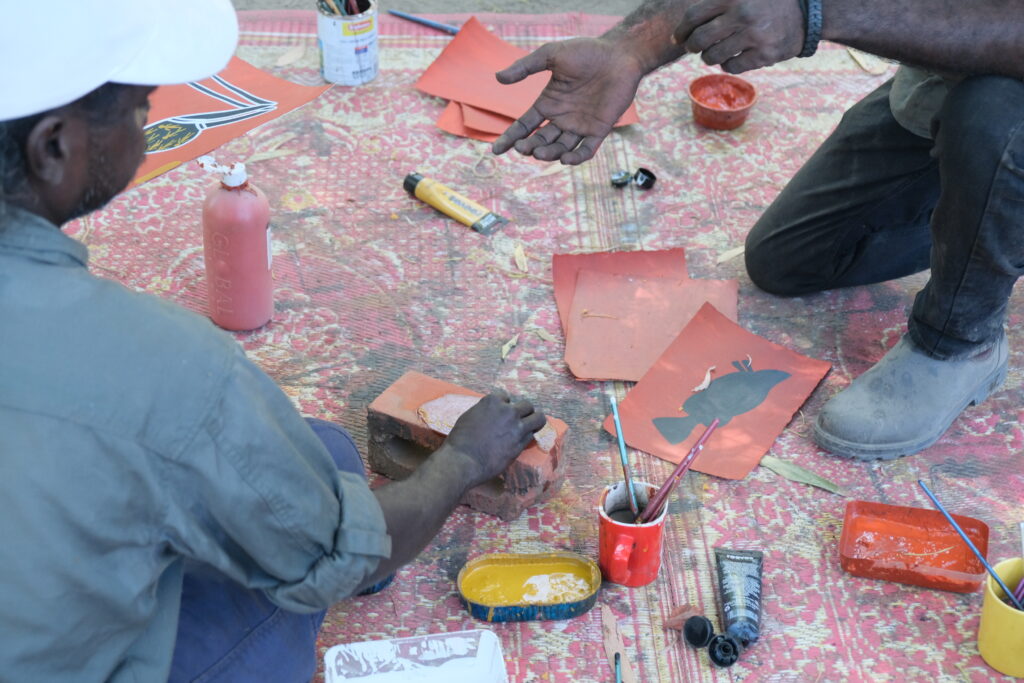
He shared insights into how Aboriginal culture is intricately woven into the fabric of these artworks.
Aboriginal Painting Tools
The canvas is made of a strip of tree bark, and the brush can be a finger, twig, or other natural object. Terrence used a strand of bush plant fashioned into a paintbrush. He explained that this practice has been passed down through generations, with each tool and technique holding cultural meaning within Aboriginal culture.
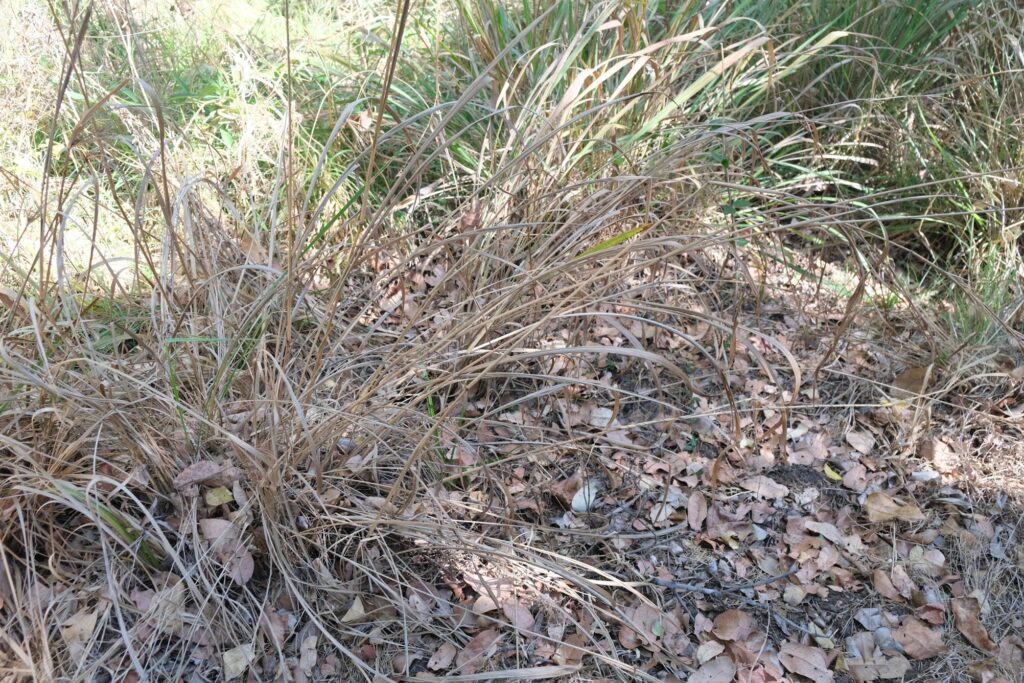
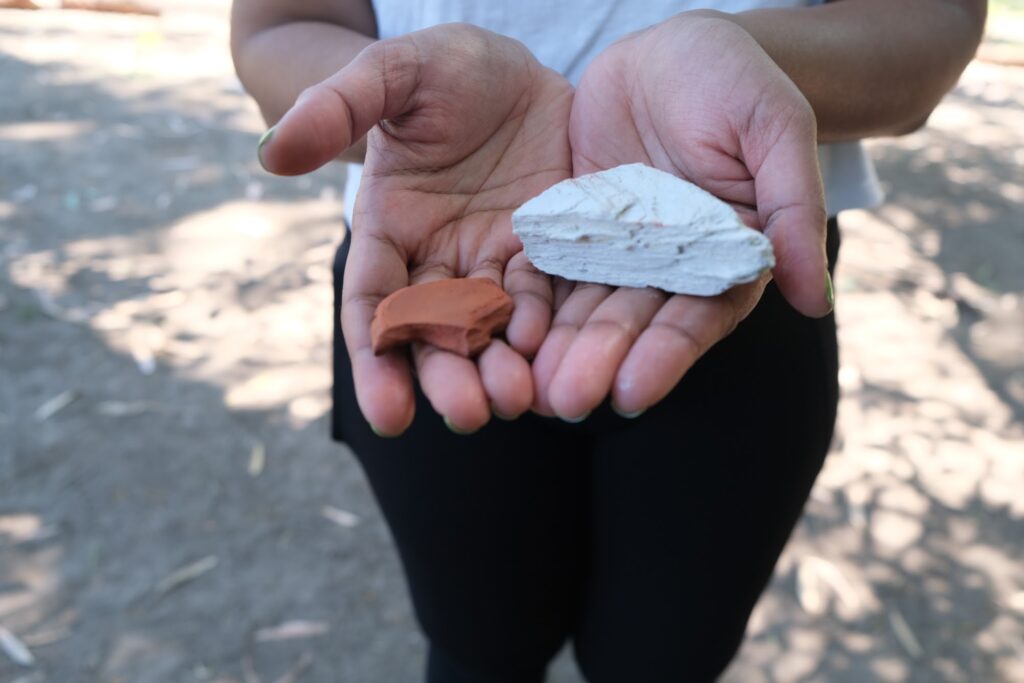
The painting uses pigments from ochre clay. Ochre clay is a clay-based rock with iron oxide that produces colour when grounded. Since it’s a natural rock, the colours are limited to earthy tones such as maroon, red, yellow, brown, and white.
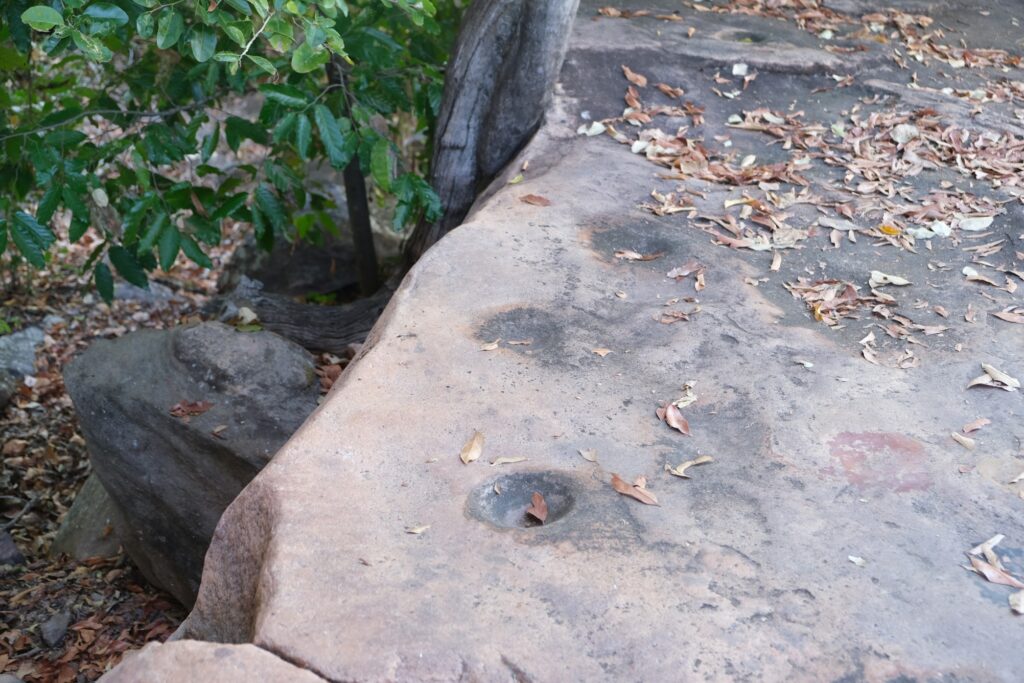
Traditionally, they made a small dent in the ground to hold water and help mix the pigments, as in the picture above, which I took at the Ubirr Rock site.
Terrence had some paintings ready, including animals closely tied to the Aboriginal culture in the Northern Territory, such as barramundi and crocodiles. The price was set at $50 for the small ones and $100 for the bigger ones (for comparison, similar-sized paintings were sold at least three times more in the market yesterday).
Now, I hadn’t planned on getting an Aboriginal painting on this tour. Also, I usually don’t carry any cash. Lastly, I am not into animal paintings, but then I saw Terrence’s larger painting of Yingarna, the creation mother.
A Story About Yingarna
Yingarna, the creation mother, carried many string bags. Every bag contained many children. Yingarna kept travelling everywhere until all the children had been placed out of her string bags. The string bags represent different tribes and languages.
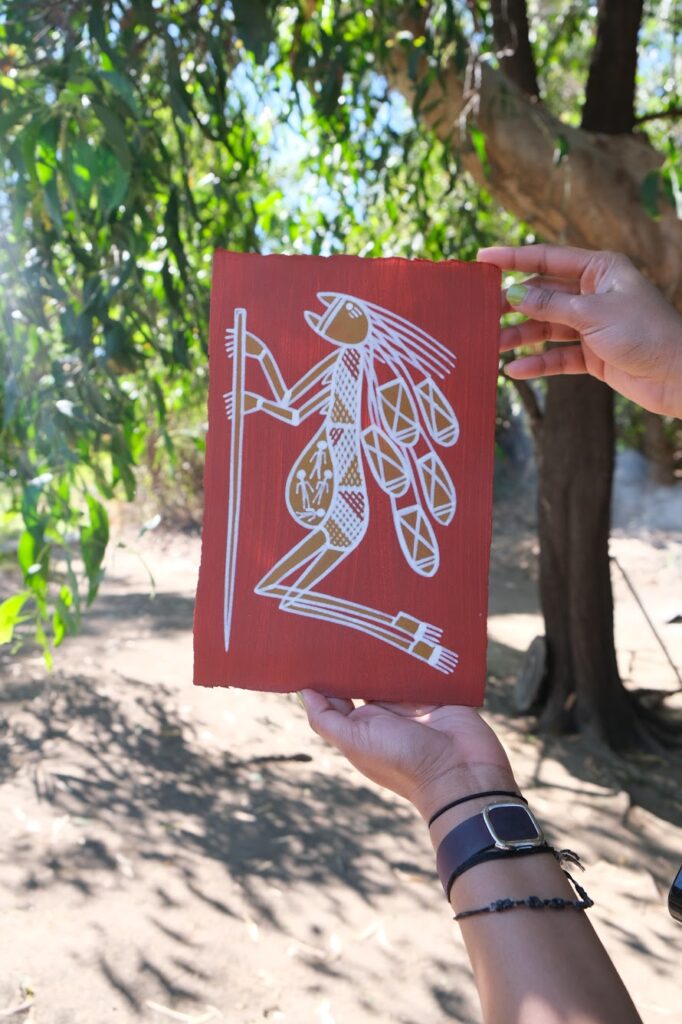
Having heard her story this morning from Norm, I was immediately drawn to it.
Then, I remembered how my Amma has the habit of slipping folded money into my wallet (she said the wallet can’t be empty; it’s not auspicious), so I dug through mine and found a $50 bill—thank you, Amma.
I asked Terrence if he would do a small painting of Yingarna for me (the one he had was painted on a large bark and had been bought by another guest). He said to come back after the boat ride (a story for another time) to collect it from him.
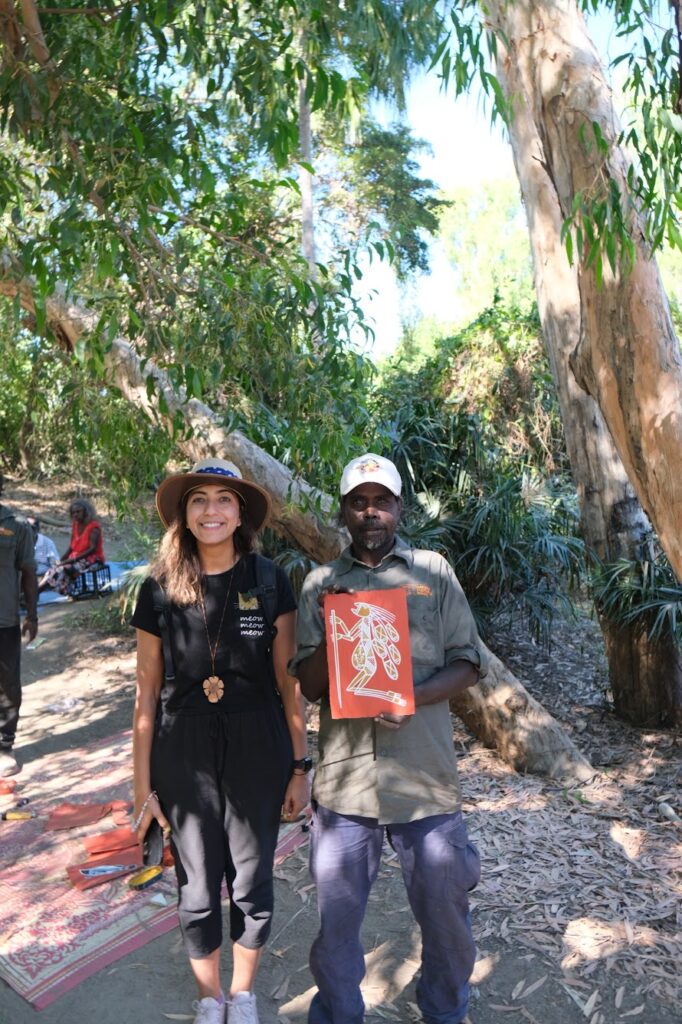
An hour later, Terrence had it ready, and it was truly beautiful. $50 and multiple thank-yous later, I carried the painting back to Darwin—with much admiration from other tour guests—all of which belong to Terrence.
The Aboriginal painting of Yingarna is now in my study. The frame from IKEA will arrive in two to three weeks, and I am still torn about whether to keep it or give it to my parents—after all, I got it using my Amma’s money.
Follow me on Instagram @KultureKween for more recent updates.
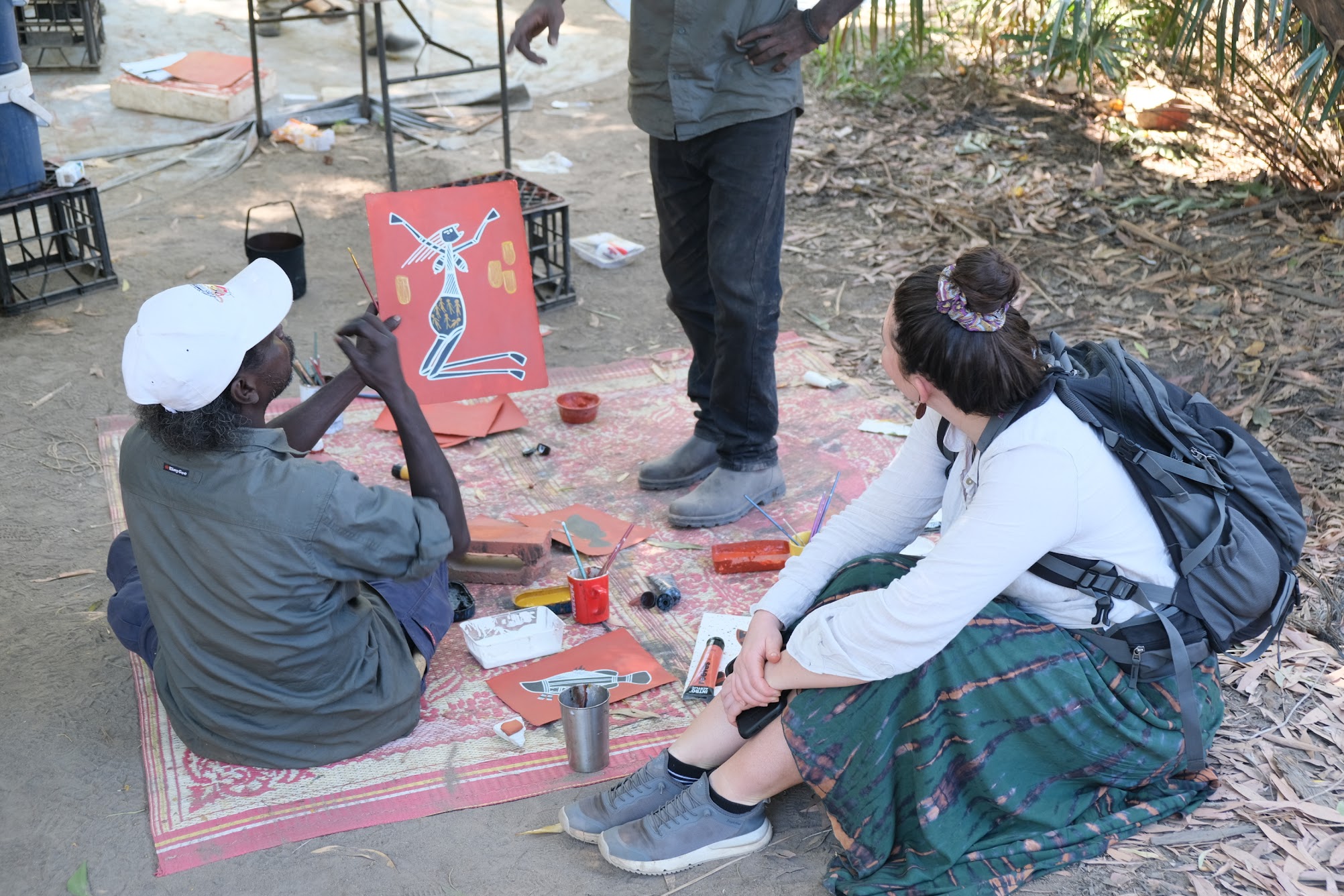

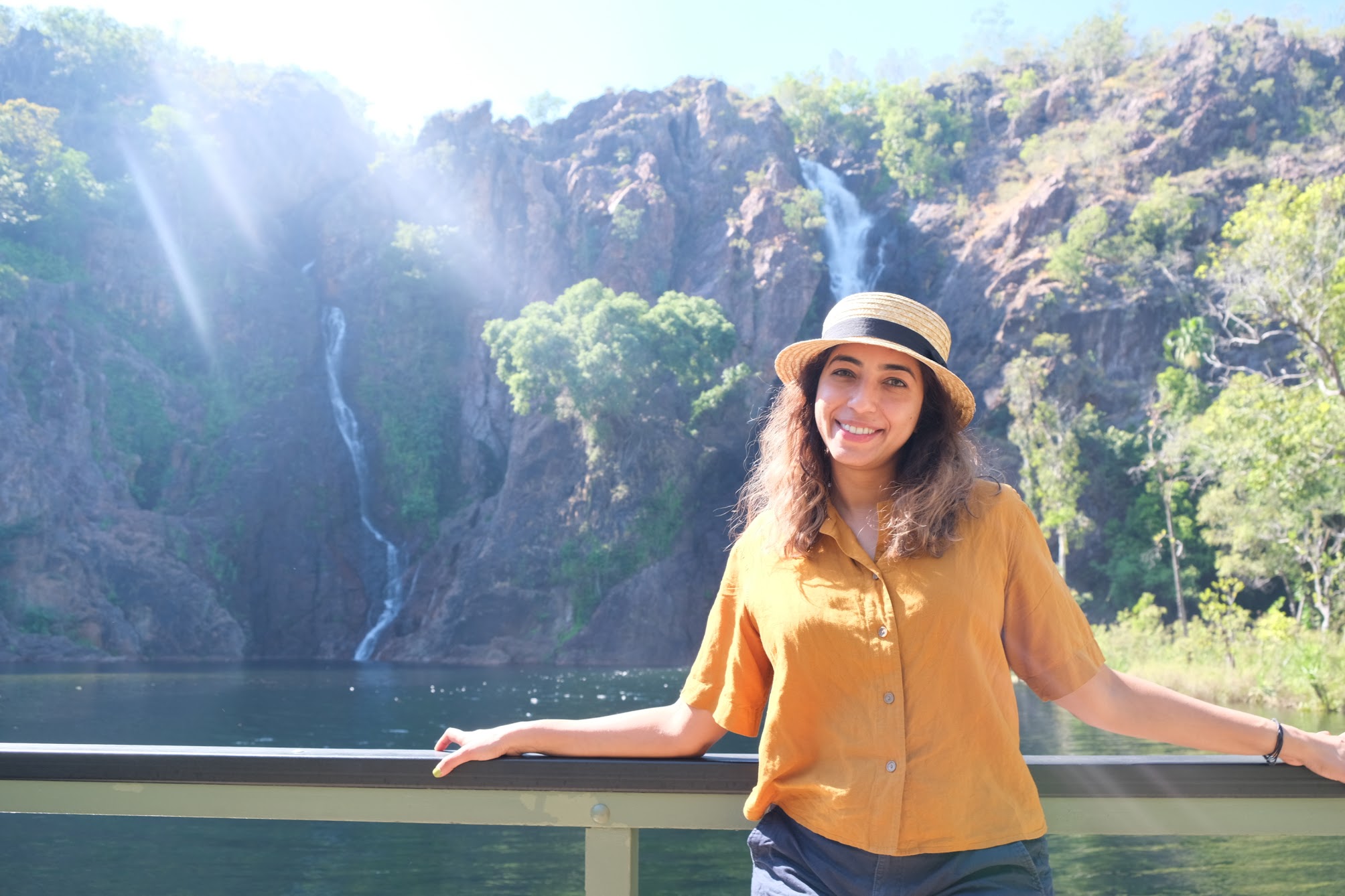
Beautiful painting 👌
Thank u…
[…] Aboriginal people have lived around Ubirr for over 65,000 years, and the rock art records essential events in the lives of the residents of Ubirr. This rock art depicts traditional paintings and the scenes Aboriginal people illustrate. It’s a part of the unwritten library of knowledge and spiritual beliefs of the Bininj Aboriginal people. The senior clan members own certain parts of this library and pass it on to younger people via storytelling, songs, dance, music ceremonies, and food-gathering expeditions. These lessons have continued for thousands of generations. Some paintings are significant as they are believed to be painted by the first people of the creation era, called the Dreamtime, who formed the land and all it contains. […]